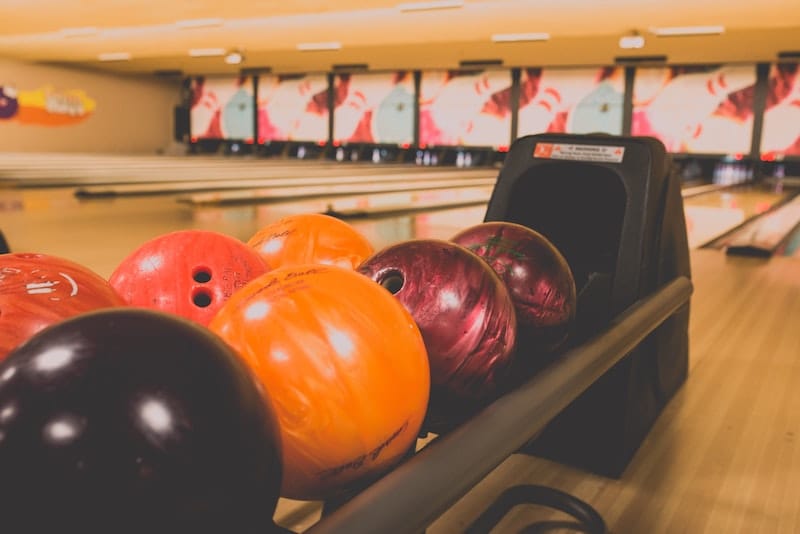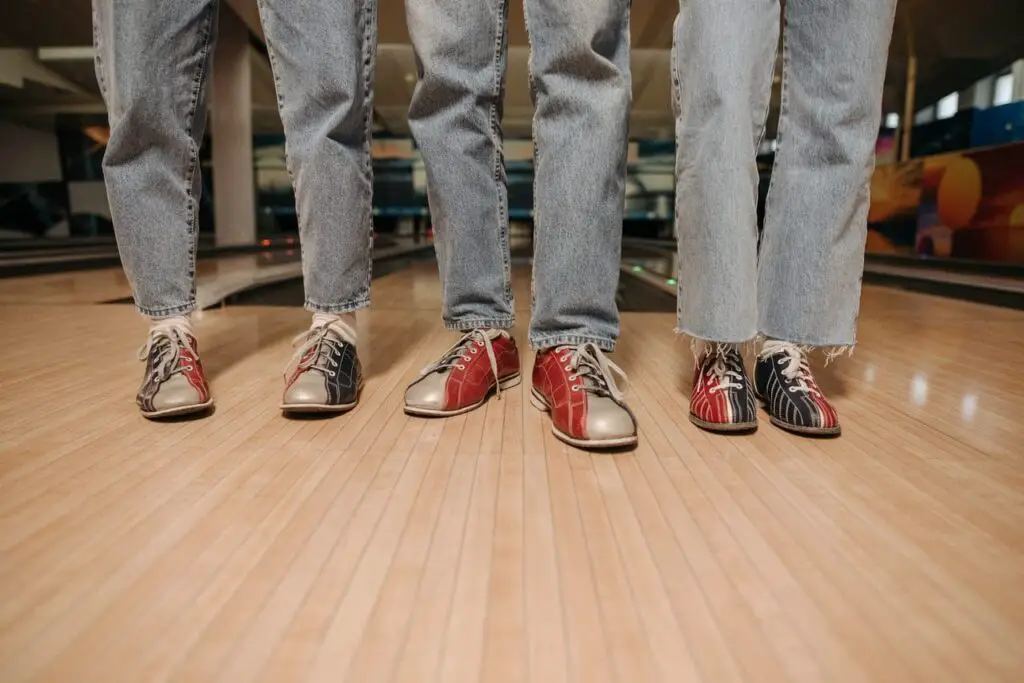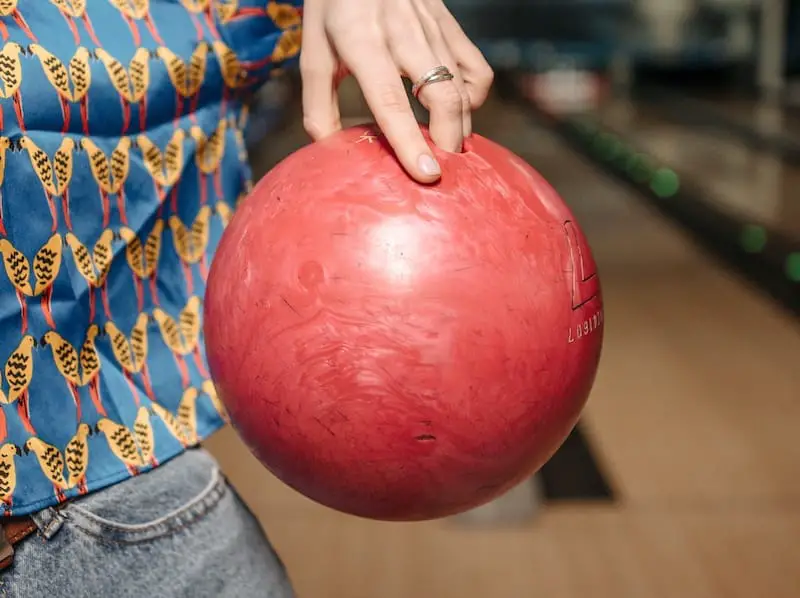Bowling pins may seem like simple objects, but their construction is actually quite complex. They are made from a combination of materials that allow them to withstand the force of being knocked down by a heavy bowling ball. The primary material used in making bowling pins is hard rock maple wood.
Overview of Materials Used
Aside from hard rock maple wood, other materials that may be used in making bowling pins include plastic, rubber, and synthetic materials. However, wooden bowling pins are still the most common type used in official competitions.
Detailed Discussion on Hard Rock Maple Wood
Hard rock maple wood is preferred over other types of wood for making bowling pins because it is strong, durable, and has a consistent density that allows for a more uniform shape and weight distribution. It also has a close-grained structure which makes it less likely to splinter or crack upon impact with the bowling ball. The process for selecting the right kind of hard rock maple wood involves rigorous inspections from experts who look for specific characteristics such as straightness, lack of knots or marks on the surface, and consistent coloration throughout the piece.
Hard rock maple wood is an essential material in constructing high-quality bowling pins due to its strength and durability. The construction techniques have been refined over time to create perfectly balanced equipment that can withstand repeated use over many years.
How are Bowling Pins Manufactured?
The process of making bowling pins is more complicated than you might think. It starts with the selection of the right wood, which is usually hard rock maple.
The wood must be free of knots and other defects that could compromise its strength and durability. Once the wood has been chosen, it is cut into blanks that are roughly the shape of a pin.
The Manufacturing Process
The blank is then placed on a lathe, where it is turned to its final shape. This involves removing material from the sides to create the familiar hourglass shape that we associate with bowling pins. The lathe operator must be skilled enough to create a perfectly symmetrical shape that will roll true when struck by a bowling ball.
Next comes the sanding process, where various grades of sandpaper are used to smooth out any imperfections and prepare the surface for painting. The pins are then painted white, with black stripes added later using stencils or tape.
A clear coat is applied to protect the paint and give the pin a glossy finish. Modern technology has revolutionized this last step by allowing for more precise control over how much clear coat is applied and how evenly it is distributed.
Modern Technology
Advances in computer-aided design (CAD), robotics, and other aspects of manufacturing have allowed for greater precision and efficiency in making bowling pins. For example, CAD software can be used to create very detailed 3D models of pins before they are even made, allowing manufacturers to spot potential problems before any wood is cut.
Robotics can also speed up some parts of the process while reducing errors caused by human factors such as fatigue or distraction. In short, modern technology has made it easier than ever before to produce high-quality bowling pins that meet all required standards for size, weight, balance, and more.
In the end, bowling pins may seem like a simple object, but their creation involves a lot of skill and attention to detail. Understanding how they are made can help us appreciate the craftsmanship that goes into making them and the role they play in one of America’s favorite pastimes.
The Different Types of Bowling Pins
When you think of a bowling pin, you might picture the classic American-style pin: tall and thin with a rounded top. However, there are actually several different types of bowling pins used around the world. The variations in design and construction can impact the way the ball interacts with the pins, making it important for serious bowlers to understand these differences.
Explanation on Why There are Different Types of Bowling Pins Used in Different Countries and Leagues
Different countries have their own preferred styles of bowling pins based on tradition and cultural preferences. For example, Japanese bowling pins are shorter and wider than American-style pins, while German bowling pins have a more rectangular shape. Additionally, different leagues may have specific regulations about the size and weight of the bowling pins used in competition.
Discussion on the Differences Between American-Style and European-Style Bowling Pins
American-style bowling pins are typically made from hard rock maple wood with a plastic coating to protect against wear and tear. They measure 15 inches tall with a diameter of 4.75 inches at their widest point. European-style bowling pins are slightly shorter than their American counterparts at 14.5 inches tall but have a larger diameter of 5 inches for increased stability during play.
Another key difference is that European-style pins have flat tops rather than rounded tops like American-style ones. This can affect how they react when struck by a ball as well as how easily they fall over during play.
Knowing about different types of bowling pins is vital for serious bowlers who want to improve their game or participate in various leagues around the world. Understanding these variations can also enhance our appreciation for this seemingly simple but important object in the sport we all love to play.
How Many Dimples Are on a Standard Bowling Pin?
You might be familiar with golf balls having dimples for flight patterns and control, but did you know that bowling pins also have dimples? These small indentations are designed to help reduce bounce and increase stability when struck by a ball. However, they are not always easy to see due to their small size and placement near seams in the wood.
On average, there are around three dozen dimples on any given standard bowling pin. These little details about bowling pins may seem trivial but knowing them can make your next trip to your local alley much more interesting.
Little-Known Details About the Design and Construction of Modern-Day Bowling Pins
While many people assume that only wood is used to make bowling pins, this is not entirely true. In fact, many modern bowling pins are made with synthetic materials such as plastic or resin.
These materials can be more durable and resistant to wear and tear than traditional wood pins. Despite this shift toward synthetic materials, however, hard rock maple wood remains the gold standard for professional bowling pin construction due to its strength and consistent performance.
Final Thoughts
Bowling pins are simple yet sophisticated objects have evolved over the years from primitive wooden objects to highly specialized equipment used in modern bowling alleys. The primary material used in making bowling pins is hard rock maple wood, and it is preferred over other types of wood due to its strength, durability, and resistance to wear and tear.
We have also learned that manufacturing a bowling pin is no easy task; it involves a long process that requires skillful craftsmanship and modern technology. Different countries and leagues also use different types of bowling pins, each with their unique design features.
Understanding what makes up a simple object like a bowling pin can enhance our appreciation for it as an integral part of the beloved sport of bowling. The next time you step into your favorite alley for a game with friends or family, take a moment to admire the beauty and precision that goes into crafting these seemingly basic objects.


